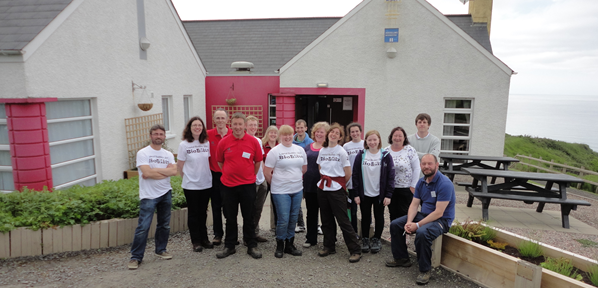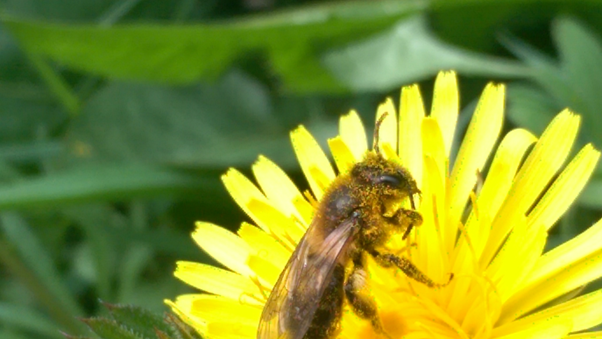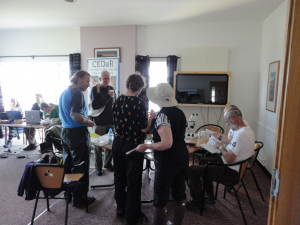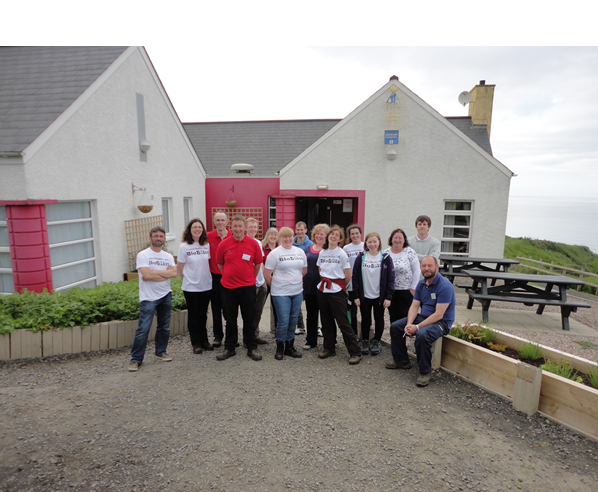
Back again with the second update and I’ll begin with a laugh.
My first day surveying at Portstewart Strand in June could have gone better. As the strand is quite a large site I had decided to try and get the furthest away section done on that day and so drove my car down the beach to get as close to the area as possible. I had been warned about cars sinking in the sand so after I had taken all of the survey equipment out of the car I checked that I could drive away- after all I wasn’t going to be finishing until late, after the National Trust staff had left and I did not want to get my car stuck …….my car was stuck in the sand and was not going anywhere- to make matters worse the tide was coming in! I was fortunate that there was lots of lovely people out that day willing to lend a hand: the National Trust were informed of my plight and the cavalry …ahem…. tractor…. was called in. The tractor managed to pull the car out and I of course -after driving forward a bit- got out to say thank you. The car was stuck again. Thankfully the tractor hadn’t left yet and the car was yet again pulled out. This time I didn’t stop driving until I had reached the carpark back at the centre. Never again. After that disaster surveying on the dunes was very relaxing and it turned out to be a lovely day with a large pollinator count.
There was two major events in June that I was lucky to be involved in. The first was the “Bee curious” pollinator event at Oxford Island on the 13th and the second was the Bioblitz at White Park Bay on the 19th and 20th. At the pollinator event I assisted Catherine Bertrand with a stall for Butterfly Conservation. This involved talking to members of the public about butterflies and moths as pollinators and allowing them to hold specimens. This event proved to be a big success with a large turnout of people- about 2000 people visited Oxford Island that day- and it also gave me great experience of outreach.
The White Park Bay Bioblitz was fantastic! Again there was a large turnout of people with many environmental recorders coming from far and wide to see what they could find. I took a look at some pitfall traps that had been set out on the site and helped with the spider ID. I put out a moth trap with the other moth recorders to cover as much of the site as possible- this meant I had a very early start on the Saturday morning! However a highlight for me was actually the planning which led up to the moth traps being placed. Like a military operation- so many traps had to be placed on the site, but then you had to think of placing them not to close to other people’s traps, the cows that were on the site, how to transport the large mercury vapour traps and how early we would be setting off to retrieve them 🙂 I also organised and delivered bug hunts for the Saturday which involved taking members of the public out on to the dunes to look for invertebrates and explaining to them the importance of recording wildlife. I had previously gave a talk to students from the Environmental society in Coleraine and some of these students attended the Bioblitz as volunteers. It was nice to see the people from the university getting involved in Environmental recording and I hope they decide to do more in the future.
To finish, looking forward to having more great days of surveying out at Portstewart Strand- less of getting stuck in the sand again- and also to the next Bioblitz. Will let you know how I get on.
To find out more about the Natural Talent Traineeships, the Esmée Fairbairn Foundation, CEDaR and the National Trust please follow the links below:
Find out more about Natural Talent
Find out more about Esmée Fairbairn Foundation
Find out more about CEDaR
Find out more about National Trust



